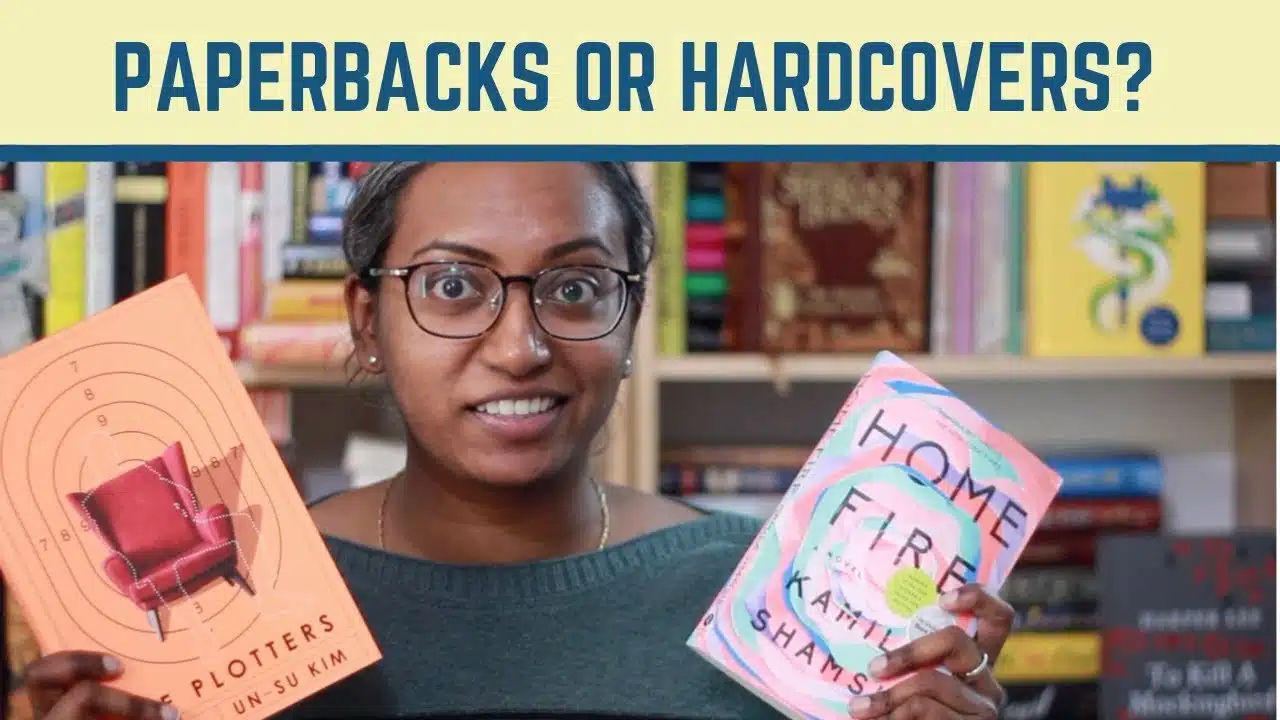A paperback book is a type of book with a soft cover, making it both flexible and lightweight. This format often appeals to readers for its affordability and convenience. Unlike hardcover books, paperbacks are usually more portable, fitting easily into bags for on-the-go reading. The soft cover also allows for a more comfortable grip during long reading sessions. So, what is a paperback book? It’s essentially a book with a cover made of thick paper or paperboard. This simple yet effective design has made paperbacks popular among book lovers everywhere.
What is a Paperback Book
A paperback book, often just called a ‘paperback,’ is a type of book characterized by its flexible, paper-based cover. Unlike hardcover books, which have rigid and durable covers, paperbacks are lighter and more portable. If you’re looking to part with your old books, you might also wonder where to sell school books. Let’s delve deeper into what makes a paperback book unique and why it remains a popular choice for readers worldwide.
Understanding the Structure of a Paperback Book
Paperback books have several distinct features that set them apart from hardcover books. These include:
- Soft Cover: The most obvious feature is the soft cover, usually made from thick paper or cardstock. This makes the book lighter and easier to handle.
- Perfect Binding: Paperbacks are typically bound using a method called “perfect binding.” This involves gluing the pages together at the spine, allowing them to open easily.
- Flexible Spine: The spine of a paperback book is more flexible compared to a hardcover. This allows the book to be bent slightly without damaging the spine.
Types of Paperback Books
There are usually two main types of paperback books: mass-market paperbacks and trade paperbacks. Each type serves different purposes and audiences.
Mass-Market Paperbacks
Mass-market paperbacks are smaller in size and often cheaper. They are frequently found in bookstores, supermarkets, and airports. These books are usually:
- Compact: Their smaller size makes them perfect for travel.
- Affordable: They are priced lower, making them accessible to a wide range of readers.
- Wide Distribution: These books are distributed broadly, making them an easy find for readers.
Trade Paperbacks
Trade paperbacks are larger and often more expensive than mass-market paperbacks. These books are usually:
- Better Quality: They often have higher quality paper and printing.
- Larger Format: The larger size can make reading more enjoyable and display the content better.
- Higher Price: The cost is usually higher due to better materials and production processes.
Advantages of Paperback Books
Paperback books offer several advantages that contribute to their enduring popularity:
Portability
Paperbacks are light and easy to carry around. This makes them ideal for commuters, travelers, and anyone who likes to read on the go.
Affordability
Because paperbacks cost less to produce, they are generally sold at lower prices than hardcovers. This makes them a budget-friendly option for many readers.
Availability
You can find paperback books in many places including bookstores, online platforms, and even grocery stores. Their wide availability makes them easier to obtain.
Ease of Use
The flexible cover of a paperback makes it easier to handle. You can bend the cover back without worrying too much about damaging the book.
Disadvantages of Paperback Books
Despite their advantages, paperbacks have some drawbacks:
Durability
Paperbacks are more prone to wear and tear due to their softer cover. They can get wrinkled or bent easily, and the pages may yellow over time.
Longevity
A paperback book may not last as long as a hardcover. The binding can weaken, and the pages can become loose after frequent use.
Presentation
Hardcovers often look more presentable on a bookshelf, making them a preferred choice for collectors and those who like to display their books.
History of Paperback Books
The concept of paperback books dates back several centuries, but they gained significant popularity in the 20th century. Let’s look at how they evolved:
Early Beginnings
In the early days, books were handwritten and labor-intensive to produce. The invention of the printing press in the 15th century revolutionized book production, making books more accessible.
The Rise of Paperback Books
In the 1930s, the modern paperback book as we know it today began to take shape. Companies like Penguin Books started producing affordable, paper-covered books that quickly gained popularity.
Paperback Books in the Digital Age
With the rise of digital reading platforms, some might think paperback books would lose their charm. However, they continue to hold their ground for several reasons:
Tactile Experience
Many readers prefer the tactile experience of holding a physical book. The act of turning pages and the feel of the paper are irreplaceable for some.
Screen Fatigue
Spending long hours on electronic devices can lead to screen fatigue. Reading a paperback can provide a much-needed break from screens.
Collectability
Paperback books can be collected, gifted, and even signed by authors, making them a treasured possession for many.
How to Care for Your Paperback Books
To ensure your paperback books last as long as possible, here are some tips for taking care of them:
- Store Properly: Keep them in a cool, dry place away from direct sunlight to prevent the pages from yellowing.
- Avoid Bending: Try not to bend the cover or pages too much to keep the book in good condition.
- Use Bookmarks: Instead of folding pages, use bookmarks to keep your place in the book.
Popular Genres and Authors in Paperback
Paperback books cover a wide range of genres and authors. Here are some popular options:
Genres
- Fiction: Novels, short stories, and sagas.
- Non-fiction: Biographies, self-help, and history.
- Mystery: Thrillers, crime fiction, and detective stories.
- Fantasy and Science Fiction: Imaginative and futuristic tales.
Authors
Some authors frequently published in paperback formats include:
- Agatha Christie: Known for her mystery novels.
- Stephen King: Famous for his horror and supernatural fiction.
- J.K. Rowling: Author of the beloved Harry Potter series.
- George R.R. Martin: Known for his epic fantasy series, A Song of Ice and Fire.
In conclusion, paperback books have been an integral part of the reading experience for decades. Their advantages in terms of portability, affordability, and ease of use make them a beloved choice for readers of all ages. Whether you’re a fan of fiction, non-fiction, or any other genre, there’s a paperback book out there waiting for you to discover. Enjoy your reading journey with this timeless format!
Frequently Asked Questions
What are the main characteristics of a paperback book?
A paperback book, often referred to as a softcover, features a flexible, durable paper or cardstock cover. Unlike hardcovers, these books have a glued spine rather than a stitched one, making them lighter and less expensive to produce. The pages inside are typically made of lower-cost paper compared to hardbound editions.
How does a paperback book differ from a hardcover book?
The primary difference between paperback and hardcover books lies in their covers. Hardcover books have rigid covers made of cardboard covered with cloth, heavy paper, or sometimes leather. Paperback books, on the other hand, have flexible, glossy covers made of heavy paper or cardstock. This makes paperbacks more portable and less durable than hardcovers.
Are paperback books more affordable than hardcovers?
Yes, paperback books generally cost less than hardcover editions. The materials and manufacturing process for paperbacks are less expensive, which translates to a lower retail price. This makes them a popular choice for readers who want a more budget-friendly option.
What is the typical size of a paperback book?
Paperback books come in a variety of sizes, but the most common sizes are mass-market paperbacks and trade paperbacks. Mass-market paperbacks are smaller, typically around 4.25 x 6.87 inches, and are designed to be portable. Trade paperbacks are larger, often around 5.5 x 8.5 inches, and are usually formatted similarly to hardcover books but with a flexible cover.
Do paperback books have a longer or shorter lifespan compared to hardcovers?
Paperback books usually have a shorter lifespan compared to hardcovers. The flexible cover and glued spine make them more susceptible to wear and tear. However, with proper care, a paperback book can still provide many years of reading enjoyment. Hardcovers, with their sturdy construction, are generally more durable and can withstand more frequent handling.
Final Thoughts
A paperback book is a type of book characterized by its soft cover. This cover, usually made of thick paper or cardboard, provides flexibility and portability. Compared to hardcovers, paperback books are typically more affordable. Their lightweight nature makes them ideal for travel and casual reading. In summary, a paperback book balances cost-effectiveness with convenience, making it a popular choice for many readers.

